|
| EMILY CARR |
 |
SUMMARY
Emily Carr is a national icon Canadians are proud to call their own who was heavily inspired by the Indigenous peoples of the Pacific Northwest Coast. A painter and writer who lived from 1871 to 1945, Carr spent much of her working life in Victoria, British Columbia, Canada, but travelled across the world to study art.
Her passion and talent for recreating the western coast of Canada in her paintings led her to become one of the best known and most influential Canadian artists of the early 20th century; and also one of the few women in the profession at that time. Adopting modernist and post-modern styles in her work, Carr was inspired by the landscape and the art of aboriginal artists, the latter evident in he use of bold, solid blocks of colour.
Though positive recognition of her work did not come until later in her life, Carr's paintings were eventually exhibited at the National Gallery in Ottawa and other cities in Canada and the United States, as well as London, Paris, and Amsterdam.
The Group of Seven - an Ontario-based collective of landscape painters - welcomed Carr as one of them, and she was influenced by the work and philosophy of the group's founder, Lawren Harris.
Near the end of her life, illness found Carr turning to writing as a creative outlet. Her book Klee Wyck was awarded the Governor General's Award for Non-Fiction in 1941.
|
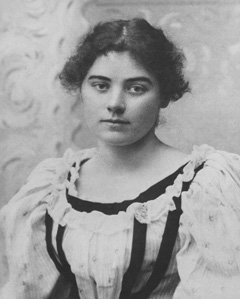
Emily Carr, 1871 - 1945
|
| BIOGRAPHY |
 |
|
The daughter of British immigrants to Canada, Emily Carr was born and raised in Victoria, B.C. Though she had no direct artistic influences as a child, she always found pleasure in drawing.
Carr's parents passed away in her early teens, and after convincing her new guardians to allow her to study in San Francisco, Carr enroled in, and spent three years at, the California School of Design. With this professional training in painting, Carr returned home to open children's art classes and take up watercolour painting.
A trip to Europe at the turn of the century became a lengthy stay due to illness, but while the excursion did not do much to advance Carr's work, it showed her the large expanse of world - and the art it encompassed - available to explore. Drawn in by the development of the Modernist Art movement, Carr returned to Europe in 1910 with her sister. In Paris, she took art classes and private courses, and eventually developed her own style of bold, post-impressionistic painting.
Armed with her own, personal artistic touch, Carr returned to Victoria in 1912. She put her skills to work in an ambitious six-week project documenting the totem poles of Aboriginal villages in northern B.C. Carr had a prevailing interest in Aboriginal culture, and this trip was the start of a primary theme in her painting - the material items of the Aboriginal culture which she, along with much of the country, felt was fading beneath Western influence.
Despite the fact that Carr's art followed the popular French style and was technically advanced, she found little support for her work in the early decades of the 20th century. Unable to live on the sale of her art, she made a living managing the apartment complex she owned, and painted less and less for the next fifteen years.
It was in the mid 1920s that criticism of Carr's work took a positive turn. An ethnologist with the National Gallery in Ottawa came across the paintings of Aboriginal items by this obscure west coast artist, and brought them to the attention of the gallery's curators, who were preparing for an exhibit of West Coast Aboriginal Art. Carr was encouraged to send her pieces, and attend the exhibit's opening in 1927.
At the exhibit, Carr met the members of the Group of Seven, a collective of landscape artists. They considered her one of their own, and welcomed her into the fold. Lawren Harris was particularly taken by Carr's work, and she by his. He became her mentor as she once again found the inspiration that had been lacking in the past years - she had discovered a group of like minded individuals and was reminded of the passion that had first fuelled her art.
After a period of painting Aboriginal themes with renewed vigor, Carr turned her focus to nature. From 1928 on, appreciation of her work spread. She showed paintings with the Group of Seven, and the American Federation of Artists in Washington, D.C., along with other significant galleries around North America. Sales of her work picked up, though this income was never enough to live on.
After suffering a heart attack in 1937, Carr found she lacked the energy to paint, and began writing instead. Though she suffered multiple heart attacked and a stroke after that, she completed her first non-fiction book Klee Wyck in 1941 and was presented with the Governor General's Award. The book outlined her experiences with the aboriginal people of the west coast; the title was their nickname for her - "the laughing one". Four other complete works were published, two in 1942 and 1944, and two posthumously in 1946 and 1953.
Following a severe heart attack, Emily Carr passed away in her home town of Victoria, B.C., in March of 1945.
|
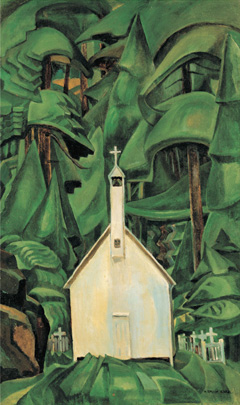
Indian Church, 1929
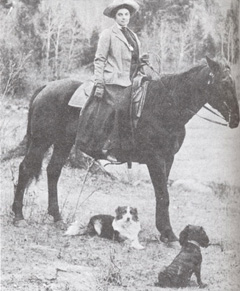
|
| HER PAINTINGS |
 |
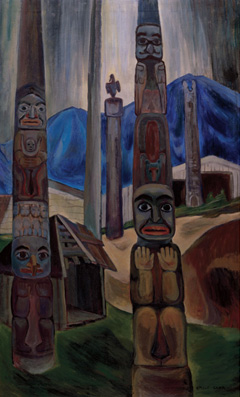
Corner of Kitwacool Village, 1930 |
Early Work
Beginning 1898, Emily Carr pursued and painted the totems, masks and other cultural items found in the Aboriginal villages along the coast. She visited Ucluelet on the coast of Vancouver Island, and travelled to Alaska with her sister in 1907. Carr wanted to capture both the items themselves and the artistic legacy of a culture she fears was fading.
During her trip to France in 1910, Carr studied with Harry Gibb, a European painter influenced by the perspective and distortion of the Cubists, such as Cézanne. Gibb's technique encouraged Carr to work with a bolder color palate and play around with perspective in her own paintings. While overseas, the work of the Fauvists and Post-Impressionists also influenced her work.
When she returned to Canada, Carr applied her new techniques to her old subject matter. It was during one of these trips, in 1912, that she painted the carved raven sculpture that would be come one of her best known works, Big Raven, Tanoo.
The Group of Seven Influence
After the encouragement of the iconic group of painters in Ontario, Carr began painting seriously again after a 15 year slump. Considered her most prolific period, these works are primarily natural scenes, a shift influenced by her extensive correspondence with Lawren Harris about theology and the beauty of the raw landscape.
Later Influences
As recognition of Carr's work spread, she established a friendship with another artist, American painter Mark Tobey. Though working with him expanded her knowledge and understanding of contemporary art, Carr was not willing to leave behind the natural scenes she loved in order to pursue the full-blown abstraction this new style embraced.
Nevertheless, critics have noted a distinct shift in Carr's work around this time, her landscapes entwined by emotional and mythological abstraction and a less painterly, post-impressionistic style than previously seen in her art.
|
| HER LEGACY: EMILY CARR UNIVERSITY |
 |
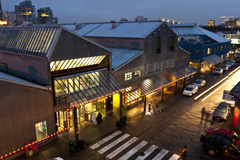
Emily Carr University of Art and Design |
Emily Carr is considered a Canadian icon, particularly on the west coast she called home. Her name has been ascribed to four schools in the country, and her childhood home is a historical site that serves as an interpretive art center for her art and writing. Perhaps the best known namesake is the Emily Carr University of Art and Design, located in Vancouver, British Columbia.
Opened in 1925 as the Vancouver School of Decorative and Applied Arts, the institution originally served just 90 students. Many well known Canadian and European artists taught at the school, including Group of Seven member Fred Varley. The school's first graduating class consisted of nine women and two men, and the onset of the Depression encouraged artistically inclined young people to pursue the design courses offered.
The institution was renamed the Vancouver School of Art in 1936; students began regularly exhibiting at the Vancouver Art Gallery and provided murals and sculptures for public spaces around the city. During the war, enrolment declined, but after 1945, men and women who had seen the world during the war flocked to the school to study both fine art and commercial design.
In 1978, the school was officially renamed the Emily Carr College of Art. By the time it attained University status in 2008, the Emily Carr University of Art and Design is a sought after destination for those seeking a career in the arts. Regular addition of programs and award-winning faculty help realize the school's own vision to become "a worldwide center of excellence in art, design, and media education and research."
|
|
© 2002-2025 - KeenART Media Ltd.
|
|
| |
|

